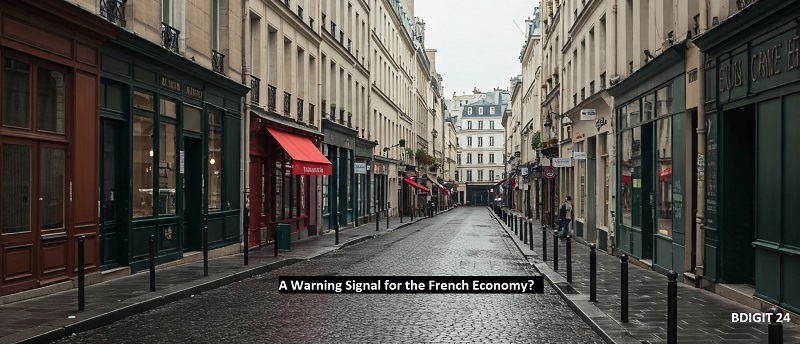A Worrying Trend After a 2023 Decline
In 2023, France experienced a significant decline in business closures (-17.9%), suggesting a stabilization after the COVID-19 crisis. However, the numbers from 2024 reveal a resurgence, with business shutdowns increasing by 9% to reach 310,066. Additionally, business failures surged to approximately 66,500 cases, marking a 28% rise compared to 2019, the last pre-pandemic year. This raises an essential question: Is this simply an adjustment after an atypical period, or does it indicate deeper economic struggles?
A Detailed Look at the Numbers
The year 2024 recorded a historic rise in business failures in France:
- Total business failures: ~66,500
- Business closures: 310,066
- Q4 2024 failures: 17,966
- Increase from 2019: +28%
- Jobs at risk: Over 260,000 (+41% compared to 2019)
Most Affected Sectors: A Key Indicator
The impact of business closures varies across industries:
- Construction and retail trade: These sectors saw the highest increase in failures, with rises of 33% and 26%, respectively, compared to pre-COVID levels.
- Transport and storage: Freight transport reached a historic peak in insolvencies.
- Business services: Business failures hit record levels.
- Accommodation and catering: The sector is nearing historic insolvency levels.
- Real estate: The only sector to show a decrease in closures, down 12.9% in 2024.
Regional Disparities: Uneven Impacts
No region was spared, but some were hit harder than others:
- Île-de-France (Paris region): Although the increase in failures (+11.2%) was below the national average, this region still accounts for nearly one-third of all business closures.
- Provence-Alpes-Côte d’Azur and Occitanie: These regions were severely affected, especially in retail and construction.
- Nouvelle-Aquitaine: The region struggled with crises in the real estate and business services sectors.
Causes and Contributing Factors
Several factors explain the sharp rise in business closures and failures in 2024:
- End of post-COVID support: The discontinuation of government aid left many businesses vulnerable.
- Economic slowdown: Despite an expected 0.8% GDP growth in 2024, economic momentum remains weak.
- Catch-up effect: Some of these failures reflect a backlog of bankruptcies that were avoided between 2020 and 2023.
- Sector-specific struggles: Industries reliant on domestic demand are particularly affected.
- Inflation and credit costs: Higher interest rates and reduced consumer spending are affecting business viability.
What to Expect in 2025?
The surge in business closures has several implications for the French economy:
- Employment at risk: Over 260,000 jobs are threatened, putting pressure on the labor market.
- Economic ripple effects: Failures affect supply chains, reduce consumer spending, and increase demands on public aid.
- Regional economic disparities: Uneven impacts could widen economic inequalities.
- Sector transformation: Some industries may undergo restructuring, which could lead to long-term innovation and efficiency gains.
While the rise in business closures and failures is alarming, it may also indicate a normalization after years of artificial stability due to post-pandemic support measures. However, the scale of this increase—especially in critical sectors like transport and business services—highlights underlying economic challenges that will require targeted policy interventions.
The coming months will be crucial in determining whether this trend is a temporary correction or a sign of deeper economic difficulties that will shape France’s economy in 2025 and beyond.
#Economy #Business #France #Finance #SMEs #Bankruptcies


